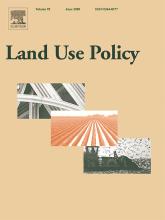Resource information
Brazil’s Soy Moratorium solidified the world’s largest traders’ commitment to stop soybean purchases from production areas deforested after July 2006. The aim was to remove deforestation from the soybean supply-chain and halt one of the main drivers of forest loss in the Amazon biome. In this study, we investigated changes in deforestation at the property-level for the period 2004 to 2014. The objective was to examine direct and indirect deforestation, defined as on-property displacement and cross-parcel displacement deforestation for soybean expansion in the Amazon region of Mato Grosso, the leading soy-producing state of the Brazilian Amazon. We used publicly available property and land use data to quantify deforestation associated with cropland expansion. Similar to previous studies, we found that direct deforestation for soybean expansion declined following the implementation of the Soy Moratorium. Moreover, our analysis suggest that indirect deforestation occurred already before the implementation of the Soy Moratorium, and decreased following the first period of analyses. However, slight increases of indirect deforestation in the more recent periods, combined with decreasing direct deforestations rendered indirect deforestation to be responsible for more than half of the deforestation associated with soybean expansion. While we acknowledge the overall reduction of deforestation for soybean, our results suggest, given the increasing trends of deforestation in the Brazilian Amazon since 2013, to address indirect deforestation within the Soy Moratorium. This may be achieved by zero-property-deforestation commitments and by strengthening the integration between supply-chain actors, the soybean and beef purchasing companies and the federal policies aiming to control deforestation.


